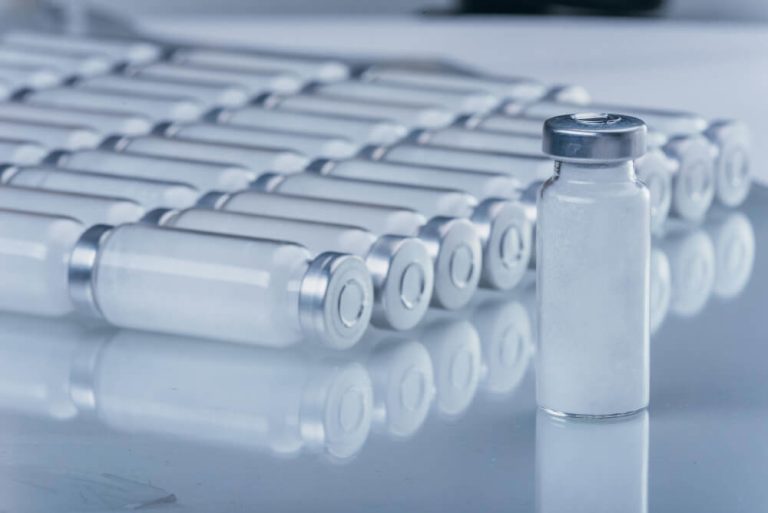The Ultimate Guide to Gut Health Training: A Blueprint for a Thriving Microbiome
In the modern pursuit of wellness and longevity, we often focus on external factors like exercise routines and skincare. Yet, one of the most powerful levers for influencing our overall health lies deep within us, in the complex and bustling world of our digestive system. The gut is far more than a simple food processing tube; it is a sophisticated ecosystem that acts as a central command center for our immunity, mood, and metabolic well-being. Understanding and nurturing this internal environment is paramount to achieving vibrant health.
This is where the concept of a proactive, intentional approach becomes crucial. Instead of waiting for digestive distress to signal a problem, we can engage in a consistent practice of cultivating a resilient and balanced inner world. This practice is best described as a form of specialized wellness development. Embarking on a journey of gut health training is one of the most impactful investments you can make in your long-term vitality, creating a foundation upon which all other health efforts can be built.
Think of it not as a restrictive diet or a temporary fix, but as a holistic re-education of your lifestyle habits. It involves learning the language of your body and providing it with the precise tools it needs to flourish from the inside out. Through targeted nutrition, mindful lifestyle adjustments, and a deeper understanding of its intricate biology, you can actively train your gut to function at its absolute peak, unlocking benefits that radiate throughout your entire body.

What Exactly Is the Gut Microbiome?
To begin this journey, we must first understand the landscape we are working with. The term ‘gut microbiome’ refers to the vast and diverse community of trillions of microorganisms that reside primarily in our large intestine. This community is composed of bacteria, viruses, fungi, and other microbes. While the thought of being host to such a population might seem unsettling, the vast majority of these residents are not only harmless but are, in fact, essential for our survival and health.
Imagine your microbiome as a bustling, microscopic metropolis. In this city, different microbes have different jobs. Some are sanitation workers, breaking down food components that our bodies cannot digest on their own, like certain types of fiber. Others are factory workers, synthesizing essential vitamins like vitamin K and several B vitamins. Still others act as security guards, helping to protect against invading pathogens that could make us sick.
A healthy gut is characterized by a state of balance, known as ‘eubiosis’. This means there is a high diversity of beneficial microbes, all working in harmony. An imbalance, where harmful species begin to outnumber the beneficial ones, is called ‘dysbiosis’. This state of microbial imbalance is linked to a wide array of health issues, from digestive upset to chronic systemic conditions.
The composition of your unique microbial city is shaped by a multitude of factors. Genetics plays a role, but your diet, environment, stress levels, sleep patterns, and medication use have a profound and continuous impact. This is empowering news because it means that your daily choices directly influence the health and balance of your microbiome.

Why Is Gut Health So Crucial for Overall Wellness?
The influence of our gut extends far beyond the confines of the digestive tract. Its health is intricately woven into the fabric of nearly every system in the body, making it a cornerstone of holistic well-being. When we train our gut for optimal function, we are simultaneously enhancing many other aspects of our health.
One of the most fascinating connections is the gut-brain axis, a constant, bidirectional communication pathway between your gut and your brain. Your gut is often called the ‘second brain’ for a reason. It is lined with millions of nerve cells and produces a significant amount of the body’s neurotransmitters, the chemical messengers that regulate mood. For instance, over 90 percent of your body’s serotonin, a key mood-stabilizing neurotransmitter, is produced in the gut. A healthy microbiome helps ensure this production line runs smoothly, supporting emotional balance and mental clarity.
Furthermore, your gut is a primary headquarters for your immune system. A staggering 70 to 80 percent of your immune cells reside in the gut-associated lymphoid tissue, or GALT. The gut microbiome acts as a trainer for these immune cells, teaching them to distinguish between friend and foe. A diverse and balanced microbiome helps maintain a strong but measured immune response, reducing the risk of both infections and autoimmune reactions where the body mistakenly attacks itself.
The gut also plays a pivotal role in metabolic health. The byproducts produced by gut bacteria when they digest fiber can influence everything from how we store fat to how our cells respond to insulin. An unhealthy gut can promote low-grade, chronic inflammation throughout the body, a factor that is closely linked to weight gain, metabolic syndrome, and type 2 diabetes. Nurturing your gut is a direct strategy for supporting a healthy metabolism.

How Can You Start Your Gut Health Training Journey?
Beginning your gut health training is an accessible process that starts with the choices you make every day. It is about consistently providing the right building blocks and creating an environment where your beneficial microbes can thrive. The core of this training revolves around three key areas: what you eat, how you live, and when to consider supplemental support.
This journey is not about perfection but about progress. Small, sustainable changes in your daily routine can lead to significant improvements in your microbial landscape over time. By focusing on nourishing your inner ecosystem, you are laying the groundwork for profound and lasting health benefits. Let’s explore the practical steps you can take to become an expert trainer for your own gut.

What Foods Should You Eat for a Healthier Gut?
Diet is the single most powerful tool you have for shaping your gut microbiome. The food you eat serves as the direct fuel source for the trillions of microbes living within you. A diet rich in variety and whole foods is the cornerstone of any effective gut health protocol.
First and foremost, prioritize fiber. Dietary fiber, a type of carbohydrate that the human body cannot digest, is the preferred food for your beneficial gut bacteria. When these microbes ferment fiber, they produce powerful compounds called short-chain fatty acids, or SCFAs. These SCFAs, like butyrate, provide energy for the cells lining your colon, strengthen the gut barrier, and have anti-inflammatory effects throughout the body. Aim for a wide variety of fiber-rich foods, including fruits, vegetables, whole grains like oats and quinoa, legumes like beans and lentils, nuts, and seeds.
Within the world of fiber, prebiotics are a special category. These are specific types of fibers that selectively feed beneficial bacteria, helping them to grow and flourish. Think of them as targeted fertilizer for the best parts of your inner garden. Excellent sources of prebiotics include garlic, onions, leeks, asparagus, Jerusalem artichokes, and slightly under-ripe bananas. Making a conscious effort to include these foods in your meals can give your good microbes a significant boost.
Next are probiotics, which are live beneficial bacteria found in certain foods. Consuming probiotic-rich foods can help introduce new, helpful residents to your microbial community. Fermented foods are the primary dietary source of probiotics. This includes yogurt and kefir with live active cultures, sauerkraut, kimchi, miso, and kombucha. To get the most benefit, look for products that are unpasteurized and refrigerated, as this ensures the bacteria are still alive. The combination of both prebiotics and probiotics creating a healthier you is a synergistic strategy for gut wellness.
Finally, do not forget the power of polyphenols. These are natural compounds found in plant-based foods that give them their vibrant colors. Berries, dark chocolate, green tea, and olive oil are all rich in polyphenols. While not fibers, these compounds can also be metabolized by the gut microbiota, promoting the growth of beneficial bacteria and exerting antioxidant effects. The simple rule of ‘eating the rainbow’ is a fantastic way to ensure you are getting a wide array of these gut-friendly compounds.
To build a robust gut, it’s about more than just adding good things; it’s also about limiting things that can cause harm. Highly processed foods, excessive sugar, and artificial sweeteners can feed less desirable bacteria and promote inflammation. A simple way to improve gut health is to focus on whole, unprocessed foods as the foundation of your diet. For those seeking a deeper dive, understanding the evidence-based use of probiotics and prebiotics can provide a more nuanced approach to dietary and supplemental choices.

Are Probiotic Supplements Necessary?
With the growing awareness of gut health, the market for probiotic supplements has exploded. This leads many to wonder if a daily pill is a necessary part of their training regimen. The answer is nuanced: supplements can be a helpful tool in specific situations, but they are not a magic bullet or a substitute for a healthy diet.
Probiotic supplements can be particularly beneficial after a course of antibiotics, which can wipe out both good and bad bacteria. Taking a targeted probiotic during and after treatment can help restore balance more quickly. They may also be useful for managing specific digestive symptoms, like certain types of diarrhea or irritable bowel syndrome, but the effects are often strain-specific. This means that not all probiotics do the same thing.
When considering a supplement, it is crucial to look for quality and specificity. A reputable product will list the specific strains of bacteria it contains, such as Lactobacillus rhamnosus GG or Bifidobacterium lactis BB-12, and provide the number of colony-forming units, or CFUs, which indicates the dose of live microbes. Researching the specific strains for your desired health outcome is important. An excellent, unbiased resource for this is Examine.com’s page on probiotics, which synthesizes scientific literature on various strains and their effects.
Ultimately, for most healthy individuals, the best long-term strategy is to get probiotics from a diverse diet of fermented foods. Food sources provide a variety of bacterial strains along with other beneficial nutrients. Supplements can be a useful adjunct, but they cannot replicate the complex nutritional matrix of whole foods. Think of them as a targeted intervention rather than a foundational practice.

What Lifestyle Factors Impact Your Gut Microbiome?
Your gut is incredibly sensitive to your overall lifestyle. What you do outside of mealtimes has a profound effect on the health and diversity of your microbiome. True gut health training integrates supportive habits into every part of your day.
Stress management is paramount. The gut-brain axis is a two-way street, and psychological stress can wreak havoc on your gut. When you are stressed, your body releases cortisol, a hormone that can increase gut permeability, sometimes referred to as ‘leaky gut’. This allows inflammatory molecules to pass into the bloodstream, triggering systemic issues. Chronic stress can also alter the composition of your gut bacteria. Incorporating stress-reducing practices like meditation, deep breathing exercises, yoga, or spending time in nature can have a direct, calming effect on your digestive system.
Sleep is another non-negotiable pillar of gut health. Your gut microbes, like you, operate on a circadian rhythm. A poor or inconsistent sleep schedule disrupts this rhythm, which can lead to dysbiosis. Research clearly shows how sleep affects your gut, with sleep deprivation being linked to a decrease in beneficial bacteria. Aiming for 7-9 hours of quality, consistent sleep per night is a powerful way to support your microbial allies.
Regular physical activity is also a potent modulator of the microbiome. Moderate exercise has been shown to increase microbial diversity and promote the growth of bacteria that produce the beneficial SCFA butyrate. You do not need to be an elite athlete; activities like brisk walking, cycling, swimming, or dancing for 30-45 minutes most days of the week are highly effective. The key is consistency.
Finally, be mindful of hydration and potential gut disruptors. Staying well-hydrated is essential for maintaining the mucosal lining of the intestines and helping fiber do its job. On the other hand, excessive alcohol consumption can negatively alter the microbiome and damage the gut lining. It is best to moderate your intake to support a healthy gut environment.

How Does Gut Health Connect to Hormones and Metabolism?
The conversation around gut health is increasingly expanding to include its profound influence on the endocrine system and overall metabolism. The gut microbiome acts as a critical regulator of hormonal signaling, impacting everything from appetite and satiety to blood sugar control.
Your gut bacteria communicate with your body by producing a vast array of metabolites, including the short-chain fatty acids mentioned earlier. These SCFAs do more than just feed your colon cells; they also act as signaling molecules that influence the release of key metabolic hormones. For example, they can stimulate the release of hormones like peptide YY (PYY) and glucagon-like peptide-1 (GLP-1). These hormones help you feel full after a meal and play a crucial role in improving how your body handles sugar.
This brings us to the critical topic of insulin sensitivity. Insulin is the hormone responsible for ushering glucose from your bloodstream into your cells for energy. Insulin resistance, a condition where cells become less responsive to insulin’s signals, is a precursor to type 2 diabetes and is linked to chronic inflammation. A healthy, diverse microbiome helps to quell inflammation and strengthen the gut barrier. A compromised gut, however, can allow inflammatory bacterial components to enter the circulation, contributing to the systemic inflammation that worsens insulin resistance.
Therefore, training your gut with a fiber-rich, whole-foods diet is a direct strategy for improving your metabolic health. By feeding the bacteria that produce beneficial SCFAs, you are supporting the hormonal pathways that regulate appetite and blood sugar. For individuals and practitioners interested in this complex interplay, understanding the principles of managing insulin sensitivity and its hormonal regulators is essential for a comprehensive approach to health and longevity.

When Should You Seek Professional Guidance?
While the principles of gut health training are powerful for promoting general wellness and preventing issues, there are times when self-care is not enough. If you are experiencing persistent or severe digestive symptoms, it is crucial to seek guidance from a qualified healthcare professional.
Symptoms that warrant a professional consultation include chronic bloating, gas, abdominal pain, persistent constipation or diarrhea, unexplained weight changes, or blood in your stool. These could be signs of underlying conditions that require specific diagnosis and treatment, such as Irritable Bowel Syndrome (IBS), Inflammatory Bowel Disease (IBD), Small Intestinal Bacterial Overgrowth (SIBO), or celiac disease.
Working with a professional can provide access to advanced diagnostic tools, such as comprehensive stool analysis, which can offer a detailed look at the composition of your microbiome, markers of inflammation, and digestive function. This information can be used to create a highly personalized treatment plan that goes beyond general advice.
In recent years, a more holistic approach has gained prominence in this field. Many forward-thinking healthcare professionals are now pursuing specialized education to better address the root causes of digestive dysfunction. Advanced programs in functional gastroenterology training for clinicians equip practitioners with the tools to look at the whole person, integrating diet, lifestyle, and advanced testing to restore gut health. Seeking out a provider with this type of background can be incredibly beneficial for complex or chronic gut-related issues.
Your gut health is a lifelong journey of learning and adaptation. By embracing the principles of gut health training, you nourish not just your digestion, but your entire being. From a clearer mind and a more resilient immune system to a healthier metabolism, the rewards of cultivating your inner garden are truly profound and are foundational to a long and vibrant life.
Frequently Asked Questions

What are some common signs that my gut health might be negatively affecting my hormones?
Symptoms of a compromised gut-hormone connection can be widespread and may not seem obviously related at first. You might experience classic digestive issues like bloating, gas, or irregular bowel movements alongside hormonal symptoms such as severe PMS, mood swings, or unexplained fatigue. Skin problems like persistent acne, eczema, or rosacea can also be a key indicator, as inflammation in the gut often manifests on the skin.
Furthermore, difficulty managing weight, sugar cravings, and brain fog can point to an imbalance. These issues often stem from poor nutrient absorption and increased systemic inflammation originating in the gut, which directly disrupts the delicate communication required for proper hormone production and regulation. If you experience a combination of these digestive and hormonal symptoms, it could signify a disruption in your gut-hormone axis.

Besides diet, what lifestyle changes can support a healthy gut-hormone axis?
Prioritizing stress management and quality sleep is fundamental for supporting the gut-hormone connection. Chronic stress elevates cortisol, which can damage the gut lining and disrupt the production of other essential hormones like estrogen and progesterone. Aim for consistent, restorative sleep, as this is when your body performs critical repair processes for both your gut and your endocrine system.
Incorporating regular, moderate movement is also highly beneficial, as it can improve gut motility and enhance insulin sensitivity. Additionally, reducing your exposure to endocrine-disrupting chemicals (EDCs) found in plastics, pesticides, and personal care products is crucial. Minimizing this toxic load reduces the burden on your liver, which is vital for both detoxification and hormone metabolism.

How specifically does the gut microbiome influence estrogen levels?
The gut microbiome directly influences estrogen levels through a specialized collection of gut bacteria known as the estrobolome. These microbes produce an essential enzyme called beta-glucuronidase, which plays a critical role in metabolizing and regulating estrogen within the body. This process determines whether estrogen is excreted or reabsorbed back into circulation.
When the estrobolome is in a state of dysbiosis, or imbalance, the activity of this enzyme is altered. An overactive estrobolome can lead to excess estrogen being reabsorbed, contributing to conditions like estrogen dominance, endometriosis, and PCOS. Conversely, an underactive one can lead to lower estrogen levels, highlighting the gut’s profound control over hormonal balance.
Discover the most comprehensive functional medicine training, longevity training, and biohacking certification programs designed specifically for healthcare professionals, medics, and clinic owners who want to master regenerative medicine protocols and anti-aging therapies.







